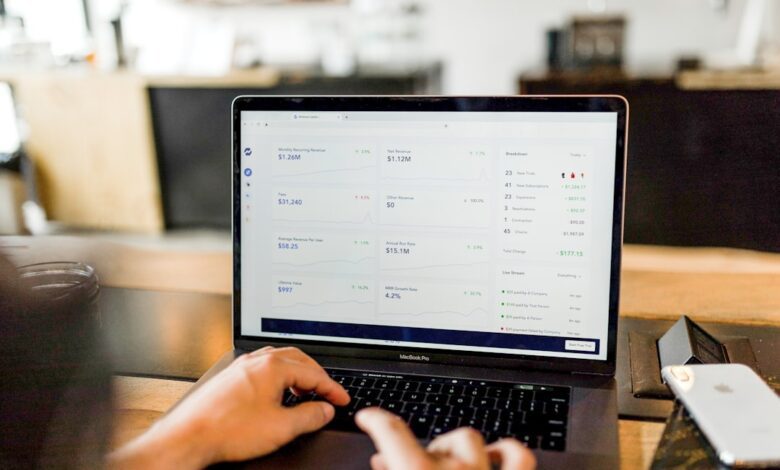Metals in Motion: Analyzing the Interplay of Industry, Investment, and Economic Trends

In today's rapidly evolving economic landscape, the dynamics of metal markets have garnered significant attention from investors, industry leaders, and policymakers alike. Metals play a crucial role not only in traditional sectors like construction and manufacturing but also in emerging technologies and investment strategies. This article explores the multifaceted roles of various metals, starting with silver, which serves as both an industrial asset and a sought-after investment. We will delve into how copper prices serve as indicators of global economic health, the increasing demand for rare earth metals driven by green energy technologies, and the investment potential of platinum versus palladium. Additionally, we will examine how metals can diversify investment portfolios, the influence of inflation on precious and industrial metal prices, the future of aluminum in a sustainable economy, and the impact of mining regulations on market fluctuations. Join us as we uncover the intricate connections between these metals and their implications for industries and investors alike.
- 1. **Silver: A Dual Force in Industry and Investment**
- 2. **Copper Prices as Economic Barometers: Understanding the Trends**
- 3. **Green Energy and Rare Earth Metals: Shaping the Future of Demand**
1. **Silver: A Dual Force in Industry and Investment**
Silver has long been recognized for its unique properties, making it a valuable metal in both industrial applications and investment markets. In industry, silver's exceptional conductivity, reflectivity, and antimicrobial qualities have led to its widespread use in electronics, solar panels, medical devices, and various chemical processes. As the demand for advanced technologies grows, particularly in renewable energy and health sectors, silver's role is expected to expand, providing a critical component in the production of efficient energy systems and cutting-edge medical equipment.
On the investment side, silver is often seen as a hedge against inflation and economic uncertainty. Investors typically view it as a safe haven, akin to gold, particularly during times of market volatility. The historical context of silver prices reflects its dual role; while industrial demand can drive prices up during economic booms, investment demand tends to surge during downturns, providing a balancing effect on its overall market value.
Moreover, the dynamics between industrial usage and investment interest can create intricate price movements. For instance, if industrial demand outstrips supply, it can lead to price increases that attract investor attention, further driving up demand. Conversely, in times of economic downturn, reduced industrial activity may lower prices, but increased investment demand can counterbalance this effect.
Thus, silver serves as a dual force in the market, with its industrial applications and investment appeal interlinked in a way that reflects broader economic trends. As the global economy continues to evolve, the interplay between these two facets of silver will likely shape its future trajectory, making it a vital element to watch for both industrial stakeholders and investors alike.
2. **Copper Prices as Economic Barometers: Understanding the Trends**
Copper has long been regarded as a reliable indicator of global economic health, earning it the nickname "Dr. Copper." This moniker stems from its widespread use across various industries, particularly construction and manufacturing, which are closely tied to economic activity. As economies grow, the demand for copper typically increases, reflecting greater industrial output and infrastructure development. Conversely, declining copper prices can signal economic slowdown or contraction, as reduced demand from key sectors indicates less confidence in future growth.
Recent trends in copper prices have shown significant volatility, influenced by a range of factors including geopolitical tensions, trade policies, and shifts in global supply chains. For instance, during periods of trade disputes, such as those seen between the United States and China, copper prices may experience fluctuations due to uncertainty in demand from these major economies. Additionally, the ongoing recovery from the COVID-19 pandemic has led to surges in copper prices, driven by stimulus measures and a rebound in construction activity.
Moreover, copper is increasingly recognized for its role in green technology, particularly in renewable energy systems and electric vehicles, which are projected to drive future demand. As countries transition towards more sustainable energy sources, the long-term outlook for copper remains bullish, further solidifying its status as an economic barometer.
Investors closely monitor copper price trends not only to gauge economic conditions but also to inform their investment strategies. A rising copper price often correlates with bullish market sentiment, while declining prices can indicate caution. Consequently, understanding the dynamics of copper pricing can provide valuable insights into broader market trends and economic forecasts.
3. **Green Energy and Rare Earth Metals: Shaping the Future of Demand**
The transition to green energy technologies is significantly reshaping the demand for rare earth metals, essential components in various applications such as electric vehicles (EVs), wind turbines, and energy-efficient technologies. As nations strive to reduce carbon emissions and promote sustainable energy sources, the reliance on rare earth elements (REEs) has intensified. These metals, including neodymium and dysprosium, are crucial for manufacturing powerful magnets used in electric motors and generators, which are integral to the functionality of EVs and renewable energy systems.
The growing deployment of renewable energy technologies is expected to drive unprecedented demand for these metals over the coming years. For instance, the International Energy Agency (IEA) projects that the demand for rare earths in the energy transition could increase sharply as countries invest heavily in clean energy infrastructure. This surge in demand is not only a response to environmental goals but also a strategic move to enhance energy security and reduce dependence on fossil fuels.
However, the supply chain for rare earth metals presents challenges. Currently, the majority of rare earth production is concentrated in a few countries, particularly China, which controls a significant portion of the global supply. This concentration raises concerns about supply stability and geopolitical risks, prompting other nations to explore domestic sourcing and recycling initiatives. As governments invest in the development of rare earth mining and processing capabilities, the landscape of these metals will likely evolve, leading to potential fluctuations in prices and availability.
In summary, the push for green energy is fundamentally altering the dynamics of demand for rare earth metals. As this trend continues, it will be essential to monitor how advancements in technology, shifts in policy, and changes in the global supply chain impact the rarity and value of these critical resources in the years ahead.
In conclusion, the intricate landscape of metals markets reveals a complex interplay between industrial demand, investment strategies, and global economic trends. Silver stands out as a unique asset with significant roles in both industrial applications and investment portfolios, while copper prices serve as vital indicators of economic health. The growing emphasis on green energy technologies is reshaping demand for rare earth metals, underscoring the importance of sustainable practices in resource extraction.
As investors weigh the merits of platinum versus palladium, the ongoing discourse highlights the necessity of diversification in investment portfolios, especially in the face of inflationary pressures that impact the prices of both precious and industrial metals. Looking ahead, aluminum's role in a sustainable economy will be pivotal, especially as industries pivot towards environmentally friendly solutions. However, the influence of mining regulations cannot be overlooked, as they shape market dynamics and ultimately affect metal prices.
Navigating this multifaceted arena requires a nuanced understanding of how these elements interact. As we move forward, staying informed about market trends and regulatory changes will be essential for both investors and industry stakeholders aiming to capitalize on the opportunities presented by the evolving metal markets.





